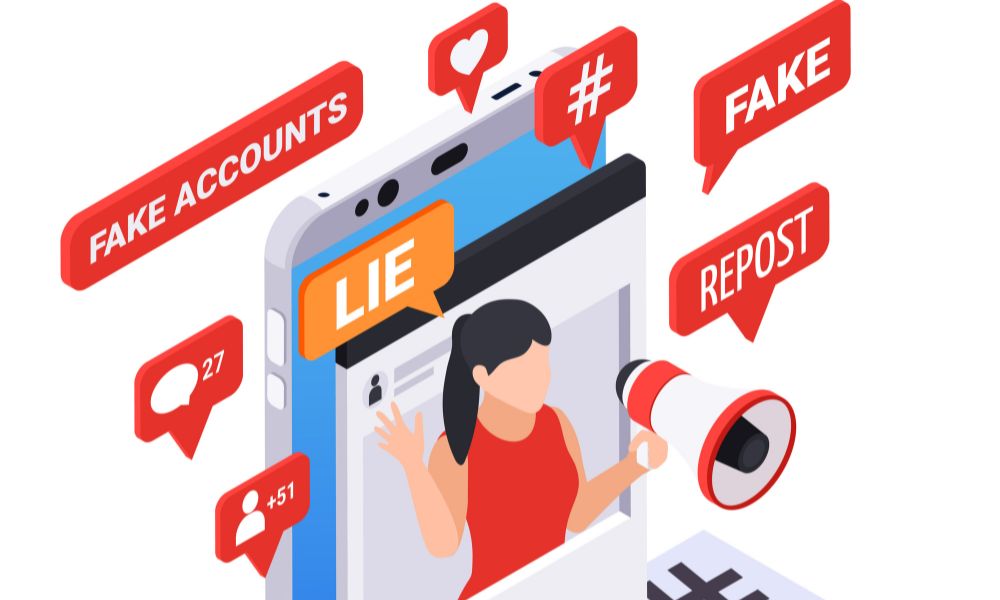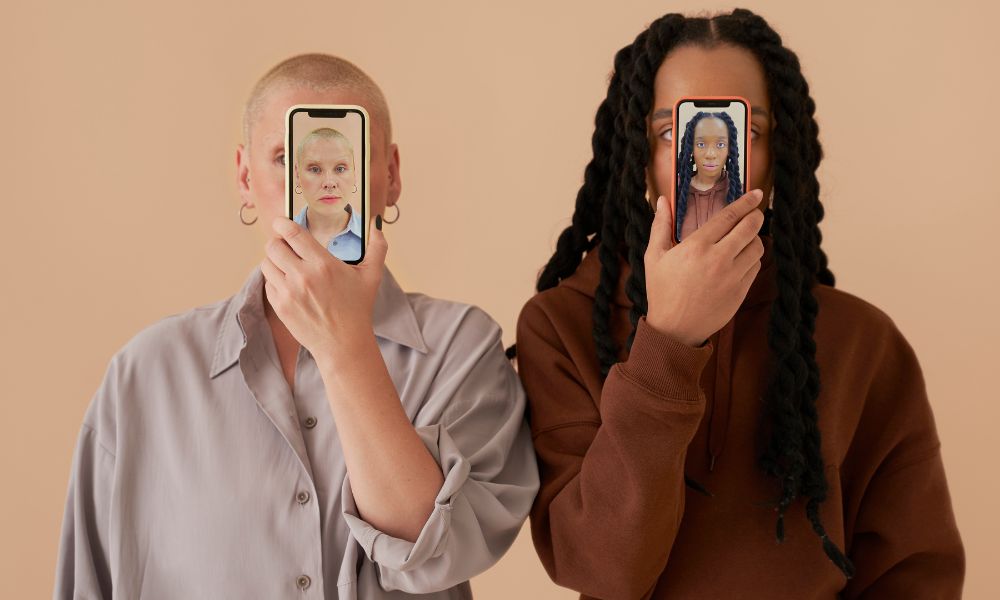
The influencer economy thrives on trust. Yet behind every viral post and polished feed, there’s a growing problem: fake influencers.
We’ve seen countless brands invest in partnerships that look promising on paper but deliver little to no return once the data is reviewed. What seems like genuine influence often turns out to be inflated metrics, purchased followers, or automated engagement designed to mislead. The illusion of popularity can quietly drain your marketing budget while damaging brand credibility.
Spotting fake influencers isn’t just a nice-to-have. It’s a fundamental skill for protecting campaign ROI, maintaining audience trust, and ensuring your brand message reaches real people.
This guide explains how to spot fake influencers, identify the warning signs, verify authenticity using the right tools, and establish a vetting process that keeps your partnerships safe and effective. Because in 2025, real influence can’t be faked, but it can be verified.
The High Cost of a Pretty Lie: Why Spotting Fakes is Non-Negotiable
The real danger of fake influencers isn’t just wasted budget, it’s the slow erosion of trust.
When an influencer’s audience isn’t genuine, every like, comment, and view becomes a false signal. Campaigns appear successful on the surface but fail to generate meaningful engagement or conversions. Over time, this distorts performance data and leads to poor marketing decisions based on inaccurate insights.
More than wasted money: working with fake influencers damages credibility on both sides.
Audiences notice when brand collaborations feel forced or lack real interaction. That disconnect doesn’t only hurt influencer’s reputation; it also transfers to the brand. Once followers suspect inauthenticity, regaining their trust can take months or even years.
So what exactly qualifies someone as a fake influencer? We use the term to describe creators who manipulate visibility through non-organic tactics such as:
- Purchased followers – bulk bots that inflate audience size without engagement.
- Engagement pods – groups trading likes and comments to simulate popularity.
- Impersonator accounts – profiles copying real creators to lure brands into fraudulent deals.
Each of these tactics creates the illusion of reach, but none deliver genuine influence. That’s why spotting these patterns early is essential before contracts, budgets, and brand trust are on the line.
Key Red Flags When Vetting an Influencer
We suggest scanning for these early warning signs before committing to deeper due diligence. Identifying fake engagement and audience inconsistencies at this stage can prevent costly partnerships and unreliable campaign results.
1. Disproportionate Follower-to-Engagement Ratios
A large following with minimal interaction is one of the clearest indicators of inauthentic influence. When we review influencer profiles, we look for consistent ratios between followers, likes, and comments.
For example, an account with 100,000 followers but only a few hundred likes per post usually signals purchased followers or inactive accounts. On the other hand, engagement rates above 15% in non-niche categories may also indicate manipulation through engagement pods. Real audiences interact naturally, and the numbers typically reflect that balance.
2. Sudden Spikes in Followers or Growth Anomalies
Authentic audience growth is gradual. Sudden jumps in follower counts over short periods, especially without viral content to justify it, often point to bot activity. We recommend checking follower growth history with Hypefy’s Influencer Marketing Agency tool.
Steady, organic growth with small fluctuations suggests authenticity. Sharp, one-time increases, especially when followed by a period of stagnation, are a red flag for purchased audiences.
3. Low-Quality or Generic Comments
Real engagement includes questions, opinions, and genuine conversation. When every post has repetitive emoji chains or generic comments like “Nice pic!” and “Wow!” it’s often automated.
We also look for patterns, identical comments from the same accounts across multiple posts. This typically signals participation in engagement pods or use of comment bots. High-quality influencers have diverse, context-aware feedback that reflects true community interaction.
4. Audience Profile Mismatch
Another strong signal is when an influencer’s audience doesn’t align with their stated niche or your target market. For instance, a “UK lifestyle influencer” whose followers are mostly inactive profiles from unrelated countries likely bought global followers to inflate reach.
Before collaborating, review audience demographics, locations, and languages. Consistency between an influencer’s content theme and audience interests indicates a real connection; mismatched audiences suggest artificial growth.
5. Excessive Sponsored Posts or Content Inconsistency
When nearly every post is branded content, engagement naturally declines. Genuine influence relies on balance, followers engage when promotions feel natural and occasional, not constant.
We’ve also seen red flags when influencers frequently change niches or brand types, for example, promoting skincare one week and cryptocurrency the next. That lack of focus signals opportunism rather than credibility. Real creators maintain content consistency and authentic partnerships that match their expertise.

Verification Steps: How to Spot Fake Influencers Beyond Surface Metrics
We recommend performing these deeper checks whenever red flags appear during your initial influencer review. Surface-level metrics can be misleading; authentic partnerships depend on verified data, transparent collaboration history, and visible audience quality.
Request Full Insights / Analytics Access
Real influencers are transparent about their numbers. Before finalizing a collaboration, ask for insights directly from their native platforms: reach, impressions, saves, story taps, and audience demographics.
We compare these insights to the influencer’s visible engagement. A healthy ratio between reach and engagement signals authentic performance. If the data feels inconsistent, such as high reach but low profile visits, that usually indicates non-organic traffic.
We also suggest requesting performance screenshots from previous campaigns, especially if they include metrics like conversions or click-through rates. Reliable creators will be comfortable sharing anonymized data to prove authenticity.
Use Influencer Vetting Tools & Platforms
Several platforms can help detect fake followers and engagement manipulation. Platform such as Hypefy analyze audience authenticity, follower growth patterns, and comment quality.
We recommend cross-checking results between at least two platforms. Each tool uses different algorithms, and comparing outputs provides a clearer overall picture.
Look specifically at audience authenticity scores and growth graphs. A score below 75% or sharp, unexplained spikes in activity often signal non-organic behavior. Using these tools early prevents wasted spend and improves campaign reliability.
Cross-Check Collaborations & References
Authentic influencers have verifiable brand partnerships and traceable content history. We always review past collaborations to confirm they align with the influencer’s niche and values.
Search for branded hashtags or tagged campaigns across their feed to see if the partnerships appear genuine and consistent. If possible, contact previous brand partners for feedback. Reliable influencers leave a transparent trail of professional work, fake ones rarely do.
It’s also helpful to check whether the influencer has ever been called out publicly for follower fraud or misleading sponsorships. Reputation history is a key part of authenticity.
Manual Sampling of Audience
No tool can replace human observation. Randomly review 50–100 follower profiles for activity quality. Authentic audiences have profile pictures, recent posts, story highlights, and follower-to-following ratios within normal ranges.
If you notice a high concentration of accounts with no content, random usernames, or identical comment behavior, it’s a sign of automation.
We often combine manual review with automated data checks, that hybrid approach catches both the technical and behavioral patterns that tools might overlook.

Best Practices to Prevent Influencer Fraud and Build Safer Partnerships
After verifying influencer authenticity, it’s important to maintain safeguards that protect your brand throughout the collaboration process. These best practices help reduce risk, improve campaign outcomes, and create transparency on both sides.
1. Start with Small Test Campaigns Before Scaling
Before committing to a long-term contract, we recommend running a small-scale pilot campaign. This approach allows you to measure real engagement, conversions, and audience fit before increasing your budget.
If the results match expectations, both in numbers and in content quality, then it’s safe to move forward with larger investments. Testing early prevents costly commitments to underperforming or suspicious accounts.
2. Use Phased Payments Linked to Performance
We suggest structuring contracts with partial payments based on delivery and verified results. For example, 50% upon content delivery and 50% after agreed-upon performance metrics are met.
This model ensures accountability and aligns incentives on both sides. Reliable influencers will have no issue working under transparent milestone-based terms.
3. Build a Vetting Checklist for Your Team
Having a standardized checklist streamlines your review process and keeps evaluations consistent.
Your checklist should include:
- Audience authenticity score thresholds (e.g., 80% minimum)
- Acceptable engagement rate range by platform
- Required platform insights and proof of reach
- Red flag indicators (sudden growth, audience mismatch, repetitive comments)
- Confirmation of verified partnerships or references
Establishing this framework turns influencer vetting from a guess into a repeatable process.
4. Work with Pre-Vetted Networks or Platforms
Using verified influencer networks or trusted marketplaces significantly reduces risk. Platforms that screen creators for audience quality and content authenticity eliminate most fraudulent profiles before they reach your brand.
We’ve found that combining manual checks with vetted databases produces the most reliable results, efficient without compromising accuracy.
5. Monitor Campaigns in Real Time
Authenticity isn’t a one-time check. Even trusted influencers can experience audience shifts or engagement drops. We advise monitoring campaign performance as it runs: impressions, clicks, engagement ratios, and follower trends.
If irregularities appear, such as sudden engagement spikes or suspicious traffic sources, pause the campaign and investigate. Ongoing visibility ensures you’re paying for real reach and genuine results.
Protecting your brand from fake influencers isn’t about skepticism, it’s about building accountability into every partnership. With clear vetting procedures, performance-based agreements, and real-time monitoring, you ensure that your marketing investment reaches real people and generates authentic impact.
Related Articles to Read
If you found this guide on how to spot fake influencers helpful, explore our other resources for building authentic and data-driven influencer strategies:
- Influencer Marketing Funnel: Guide to Turning Followers into Customers
- Influencer Attribution: Models, Tools & Strategies to Measure Creators’ Impact
- Influencer Relationship Management: Strategic Guide to Building Lasting Creator Partnerships
- Influencer Marketing Automation: Tools, Workflows & Best Practices
Key Takeaway: Real Influence Is Measurable
Influencer marketing works best when authenticity drives every metric. As the industry matures, fake followers and inflated engagement have become easier to detect, but only if brands take the time to look beyond surface numbers. By combining structured vetting, data verification, and real-time monitoring, we can make influencer partnerships both transparent and high-performing.
At Hypefy, we make that process faster and simpler. Our platform provides verified influencer data, AI-powered audience insights, and campaign tracking designed to help brands collaborate with real creators who deliver real results.
Because the illusion of influence can fade, but authenticity always converts.

